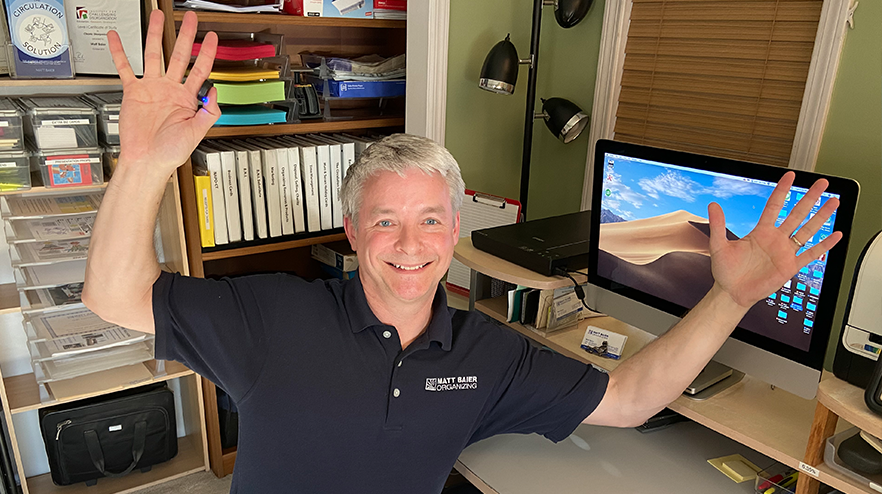If your shelves are overrun with binders and they’re busting at the seams it may be time to rethink your use of binders. Binders have their place, but like so many things, they will serve you better if used within limits. Here’s how:
1. Reserve For Reference.
Binders make sense for items you may actually want to reference from time to time. Pages are easier to read from a binder than if they are stuffed in a file. If you find yourself saving something other than reference in a binder, stop and ask yourself “why?” If it’s something you only need to be able to lay your hands on, but not too often, it makes more sense in a file cabinet. A file is a better use of space and it’s less likely to take up permanent residence than in a binder.
2. Two Inch Spine or Less.
Wide binders with more than a 2 inch spine are a poor use of space. If a binder is 3”, it holds 2” of paper, whereas a 2” box bottom hanging folder holds 2” of paper. This may not sound like much, but consider the cumulative effect of increasing your file space by a third. Big binders are bulky and awkward to use. Binders with less than a 2” spine, on the other hand, fit in vertical organizer, which provides great structure to keep your binders useable. If you don’t intend to use the binder’s contents, consider filing them.
3. Ignore the 3 Hole Punch Imperative.
Many documents are sent to us with three punched holes, suggesting that we “should” collect these in binders. Again, that’s a waste of space for files you don’t intend to regularly reference. Also, things like bank records and investment statements tend to collect for years, to the point where they compromise the integrity of the binder. Statements should circulate from active to archive regularly, not get trapped in a binder. And certainly don’t waste time punching your own holes for papers that are best suited to a file cabinet.
Consider the savings and gains by using this approach. You save time and aggravation by accessing binders and pages in smaller binders. You can gain 18’’ of accessible shelf space while only losing 12” of inaccessible file space. You save time transferring old files to more remote archives, accessing sliding bulky folders, and punching holes. Of course if you’re comfortable accessing all your statements online you can ditch the binders AND the files and really save some serious time and space!
Please Share With Your Community
Related Posts
Testimonials
What some of our clients are saying
Imagine An Organized Home
















